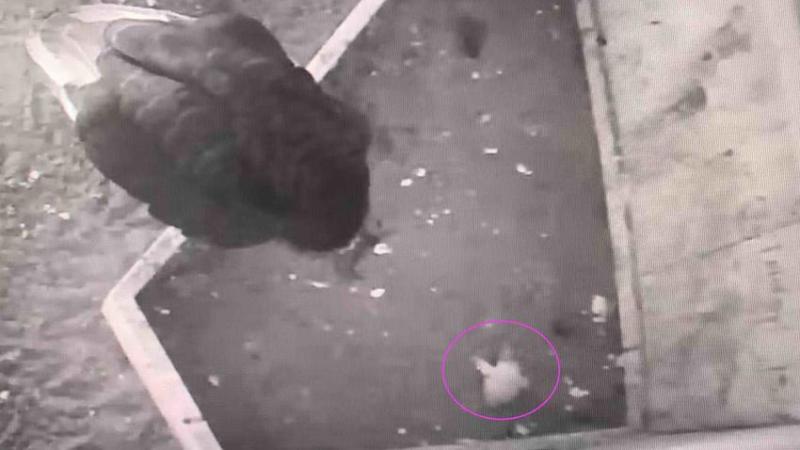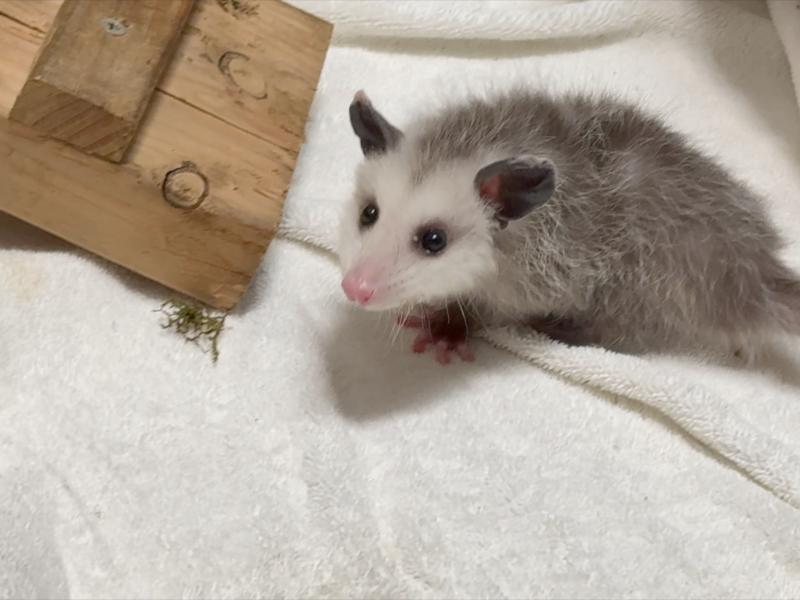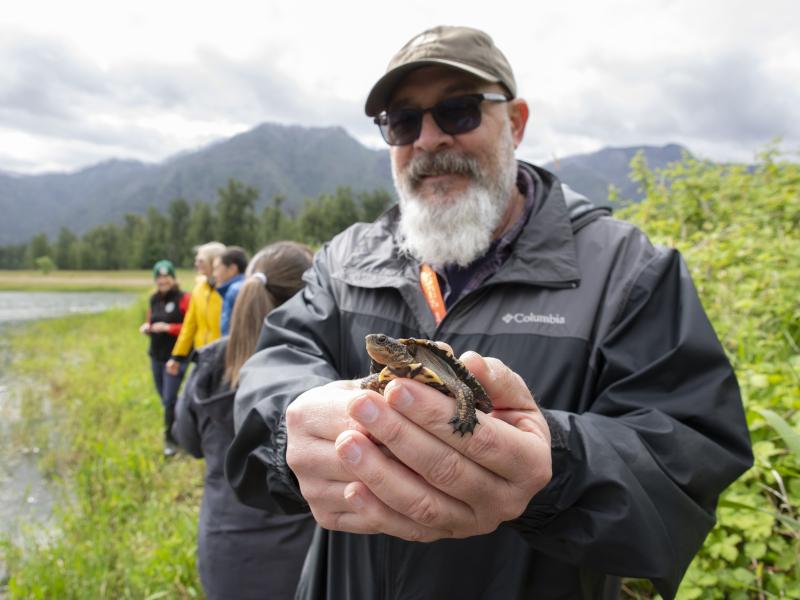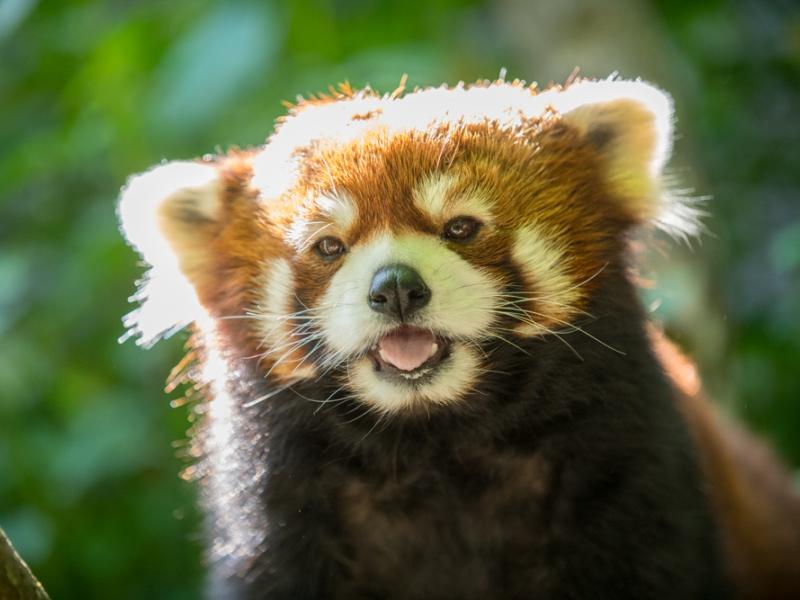Egg-citing news! Zoo welcomes first condor chick of 2020

With a fluffy new chick and more on the way, Oregon Zoo condors are on track for a great year
You can't save California condors from extinction without hatching a few eggs. A proud condor mom welcomed a fluffy new chick at the Oregon Zoo's Jonsson Center for Wildlife Conservation this week, kicking off what looks to be great year for the condor recovery effort.
"Each new egg is critical to the California condor's comeback," said Kelli Walker, the zoo's lead condor keeper. "With only about 500 of these endangered birds in the world, every chick counts."
Since late January, condors at the offsite facility have been laying the groundwork for species recovery one egg at a time. One egg has hatched so far this season, and more are expected to arrive in the coming weeks.
"The new chick is sitting up and making plenty of noise already, which is an excellent sign," said Kelli Walker, the zoo's lead condor keeper. "Mom is being really attentive, and they're both doing great."
Typically, both condor parents will tend to a newly hatched chick, but the latest condor to join the flock is being raised by a single mom.
"We can occasionally have single birds raise a chick, which we're able to support because of the consistent close food supply at our conservation center," Walker said. "A single adult can feed and be back in the nest room before the chick gets cold."
The chicks that hatch this season will stay with their parents for at least eight months before moving to the Jonsson Center's pre-release pens for about a year and a half. Eventually, they will travel to a wild release site to join free-flying condors in California, Arizona or Baja Mexico. With so few of the birds left in the world, each new chick is vitally important to the species' survival.
The Oregon Zoo's condor recovery efforts take place at the Jonsson Center for Wildlife Conservation, located in rural Clackamas County on Metro-owned open land. The remoteness of the facility minimizes the exposure of young condors to people, increasing the chances for these birds to survive and reproduce in the wild. California condor breeding programs are also operated at San Diego Zoo's Wild Animal Park, the Los Angeles Zoo and the Peregrine Fund's World Center for Birds of Prey in Idaho.
The California condor was one of the original animals included on the 1973 Endangered Species Act and is classified as critically endangered. In 1982, only 22 individuals remained in the wild and by 1987, the last condors were brought into human care in an attempt to save the species from extinction. Thanks to recovery programs like the Oregon Zoo's, the world's California condor population now totals more than 517 birds, most of which are flying free.
More News

Awesome opossum! Orphaned baby finds new home at zoo
A tiny opossum found wandering earlier this month has made his way to a new home at the Oregon Zoo.May 28, 2025

Zoo, partners return 19 endangered turtles to wild
Zoo-reared northwestern pond turtles are released in the Columbia River Gorge It was a shell-ebration last week for 19 northwestern pond turtles reared at the Oregon Zoo. In addition to partners from the Washington Department of Fish & Wildlife and U
May 19, 2025

Sad goodbye to "Sir Snacks-a-lot," beloved red panda Moshu
The Oregon Zoo is mourning the loss of beloved red panda Moshu, who passed away peacefully this morning, more than a year after being diagnosed with severe heart disease.May 14, 2025

